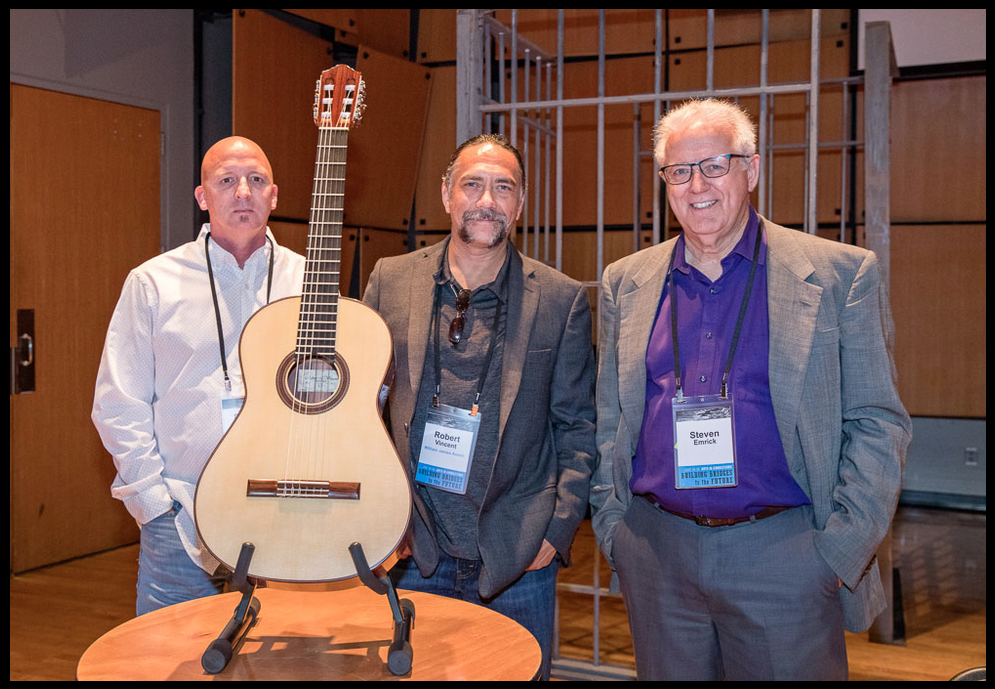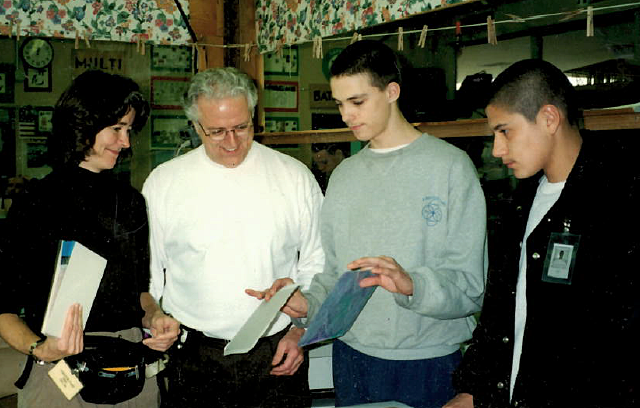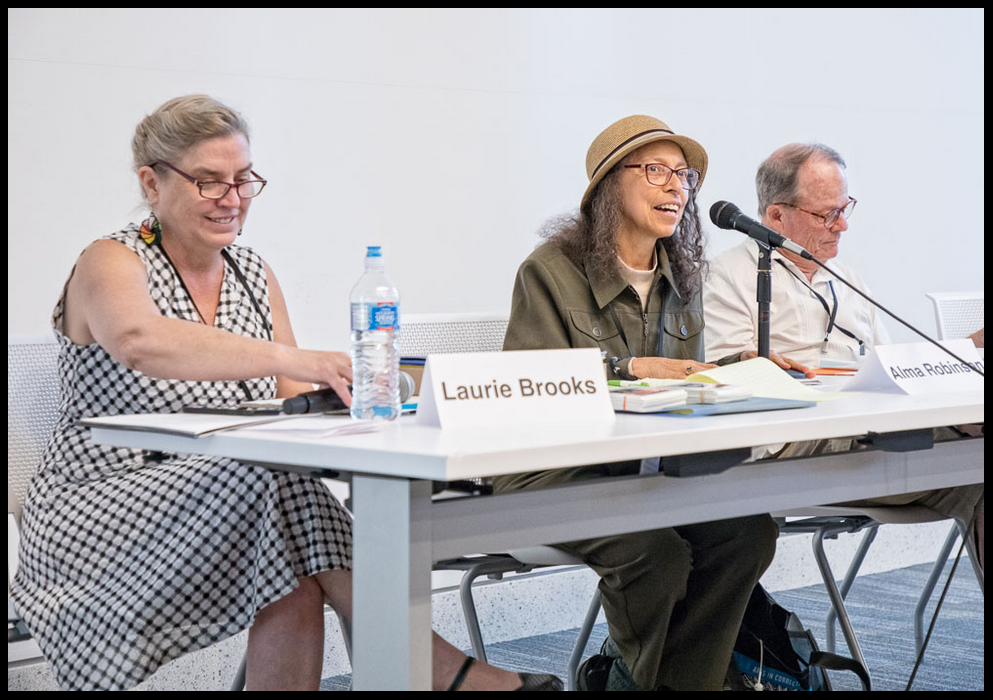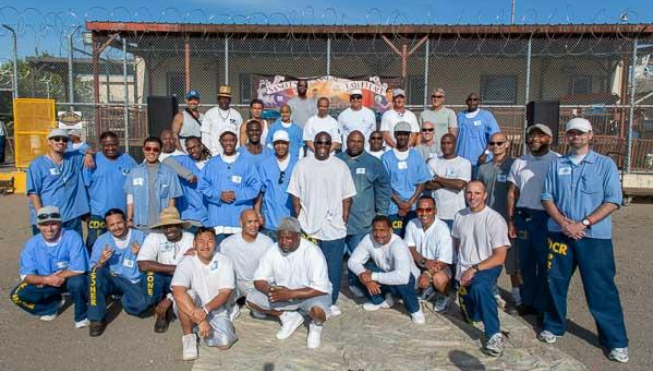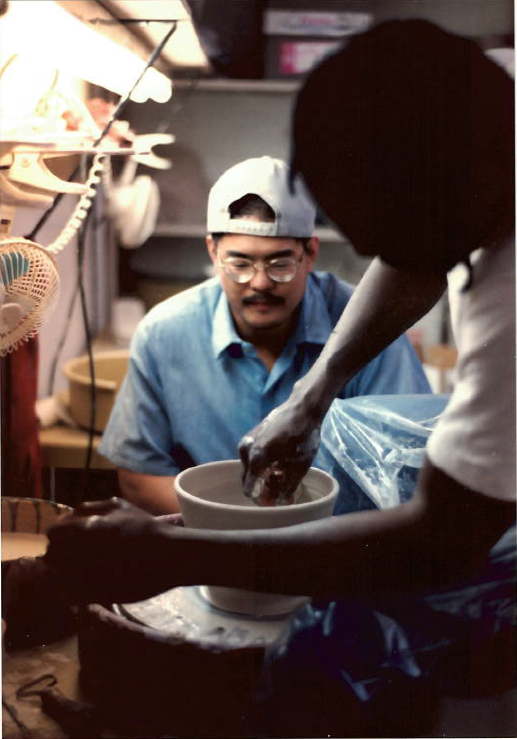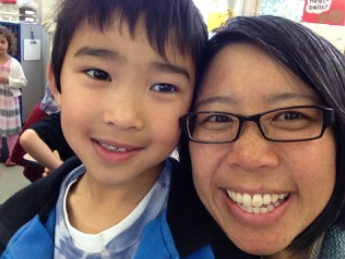The fifth part of my interview with yoga teacher Charu Rachlis picks up with her move away from Berkeley’s Nyingma Institute. She describes falling in love, giving birth to her daughter, and meeting key mentors on her path to becoming a yoga teacher.
Sarah: Tell me about moving on from the institute. Where did you go?
Charu: I felt I needed to be out in the world, but I didn’t want to go back to Brazil. I told my friend Sue, another student at the institute, that I was ready to move out and get a job. She said, Look no further; my mother needs someone to take care of her. We can pay you in cash. So I moved out, into the basement of a house on Harmon Street in Berkeley with two Polish friends who left the institute at the same time as I did. I worked Thursday nights through Monday mornings taking care of this wealthy 94-year-old woman. Her name was Mrs. Medway. She was a lovely, funny lady from Chicago, who was losing her short-term memory. She’d ask, What is it that you do for a living? I’d say, I take care of old people. She’d say, Oh, they must love you. She would tell me the same stories over and over.
At some point I started feeling very tired of that. I told my housemates I needed to be with people my age and have some fun. One of them said, Why don’t you come with us to this group that meets in Tiburon on Thursday nights? They explained to me that the group focused each week on an aspect of relationships. The attendees broke into little groups, shared with one another, and then meditated. Then a therapist who led the group would play wonderful music and everyone would dance together. I said, sure, I’ll go. My friend Sue, Mrs. Medway’s daughter, said she would stay with her mom while I went and that I could even borrow her car. Later on, I found out that it was an Osho Rajneesh group, but at the time I had no idea.
So anyway, I go with my friend to this beautiful house in Tiburon. When I walk in I see this really cute guy. I mean, there were lots of beautiful young people there, but I saw him. He invited me out. That was my future husband, Sahajo. We’ve been together from that moment to this day—almost 25 years.
With mentor Thomas Michael Fortel.
Sarah: You’ve written about your relationships with yoga teacher Thomas Michael Fortel and meditation teacher Leslie Temple Thurston. Tell me about these relationships and how they helped you further develop your practice.
Charu: I went with my roommate from the Nyingma Institute to her friend’s birthday party. The friend turned out to be Thomas, and from that point forward we developed our own friendship based on a mutual passion for self-inquiry. I started taking taking yoga classes from him and he mentored me. Later on, when he moved to Big Sur, he invited me to take over all his classes at Mindful Body. That was the beginning of my career. From then on he continued to open doors for me, inviting me to teach with him at Esalen, as well as in Europe, Alaska, and Mexico. So I have eternal gratitude for him.
I met Leslie later, in 1994, after I’d left the institute. I attended a darshan that she offered. A darshan is an ancient Indian practice in which a teacher transmits love and peace to their students. I felt an instant connection with Leslie. In 1996 I enrolled in her four-year teacher training program, which focused on non-duality. At that time I was just starting out as a yoga teacher. Like Thomas’s mentorship, Leslie’s training opened my heart. and deepened my studies and practices.
Sarah: Can you briefly explain non-duality for people not familiar with that concept?
Charu: We live in a dual world in which everything is characterized by binaries: good/bad, right/wrong. To study non-duality is to investigate the aspects of life that are not at the extremes and not rigidified. It’s to see the grey shades between the black and white.
Sarah: Thanks. So you started this training in 1996.
Charu: Yes. I was pregnant at the time. I have always loved the fact that in the same period in which I gave birth to my daughter, I also gave birth to my vocation as a yoga teacher.
In fact, I wanted to have another kid but I didn’t get pregnant again. I came to see this as a divine plan. Yoga is my second child.
Getting started as a teacher wasn’t easy, though. I was very timid in the beginning. And it was difficult financially because we had no money for nannies. But Sahajo supported my decision to teach. Little by little, it all worked out..
If you had told me when I was 20, during my dark night of the soul in Brazil, that I would become a yoga teacher later in life, I would have said, I think you’re crazy! It took a long time to find who I was. But at one point an astrologer read my chart and said, Everything will come later for you than for everyone else; don’t compare yourself. I was 39 when I started teaching.
Next: The Heart Is the Major Target—Part 6: Grab the Right Computer File
-
August 2021
- Aug 31, 2021 The Heart Is the Major Target—Part 9: The Teacher Role Isn't My Essence Aug 31, 2021
-
June 2021
- Jun 13, 2021 The Heart Is the Major Target—Part 8: Machines Spilling Out Teachers Jun 13, 2021
-
April 2021
- Apr 14, 2021 The Heart Is the Major Target—Part 7: A Waterfall of Inspiration Apr 14, 2021
-
February 2021
- Feb 14, 2021 The Heart Is the Major Target—Part 6: Grab the Right Computer File Feb 14, 2021
-
December 2020
- Dec 26, 2020 The Heart Is the Major Target—Part 5: Yoga Is My Second Child Dec 26, 2020
-
November 2020
- Nov 5, 2020 The Heart Is the Major Target—Part 4: Wow, This Is Me Nov 5, 2020
-
October 2020
- Oct 4, 2020 The Heart Is the Major Target—Part 3: In Exile in My Own Country Oct 4, 2020
-
August 2020
- Aug 23, 2020 The Heart Is the Major Target—Part 2: Openness to the Unseen Aug 23, 2020
- Aug 2, 2020 The Heart Is the Major Target—Part 1: Let's Move Around; We'll Feel Better Aug 2, 2020
-
July 2020
- Jul 25, 2020 Educator Wellness Series Conclusion: Moving Forward with Wellness Jul 25, 2020
- Jul 6, 2020 Educator Wellness Practice #10: Inhabiting the Dignified Stance of "Adequate" Jul 6, 2020
-
June 2020
- Jun 17, 2020 Educator Wellness Practice #9: Jun 17, 2020
- Jun 3, 2020 Educator Wellness Practice #8: Reducing Stress Through Body Scanning Jun 3, 2020
-
May 2020
- May 21, 2020 Facebook Live Event: A Conversation About the Impact of Saying Goodbye to Students May 21, 2020
- May 13, 2020 Educator Wellness Practice #7: Setting Intention and Letting Go of Results May 13, 2020
- May 6, 2020 Educator Wellness Practice #6: Practicing Goodwill as Self-Care May 6, 2020
-
April 2020
- Apr 29, 2020 Educator Wellness Practice #5: Dealing with Constant Change Apr 29, 2020
- Apr 22, 2020 Educator Wellness Practice #4: Listening to Silence Apr 22, 2020
- Apr 21, 2020 Facebook Live Event: A Conversation About the Importance of Self-Care Apr 21, 2020
- Apr 15, 2020 Educator Wellness Practice #3: Apr 15, 2020
- Apr 8, 2020 Educator Wellness Practice #2: Engaging Wisely with News and Media Apr 8, 2020
- Apr 1, 2020 Educator Wellness Practice #1: Breathe ... Keep Breathing Apr 1, 2020
-
March 2020
- Mar 25, 2020 Educator Wellness Series for Collaborative Classroom Mar 25, 2020
-
May 2019
- May 19, 2019 Managing to Build Bridges - Part 8: Do We Want to Be Right in a Dictionary Sense? May 19, 2019
-
April 2019
- Apr 27, 2019 Managing to Build Bridges - Part 7: You Just Need to Find a Good Husband Apr 27, 2019
- Apr 6, 2019 Managing to Build Bridges - Part 6: Human Remains and Cultural Artifacts Apr 6, 2019
-
March 2019
- Mar 17, 2019 Managing to Build Bridges - Part 5: Poetry Has No Rules Mar 17, 2019
- Mar 3, 2019 Managing to Build Bridges - Part 4: Dessert Goes to a Different Stomach Mar 3, 2019
-
January 2019
- Jan 13, 2019 Managing to Build Bridges - Part 3: I Felt Pretty Stupid Jan 13, 2019
-
December 2018
- Dec 9, 2018 Managing to Build Bridges - Part 2: Such a Bad Kid Dec 9, 2018
-
November 2018
- Nov 23, 2018 Managing to Build Bridges - Part 1: The Pressure to Be a Certain Type of Girl Nov 23, 2018
-
October 2018
- Oct 23, 2018 Leadership Without Ego - Part 6: Mayberry with an Edge Oct 23, 2018
- Oct 1, 2018 Leadership Without Ego - Part 5: Everyone Everywhere Deserves to Make Art Oct 1, 2018
-
September 2018
- Sep 10, 2018 Leadership Without Ego - Part 4: I'm About Ready to Swear Sep 10, 2018
-
August 2018
- Aug 19, 2018 Leadership Without Ego - Part 3: The Dalai Lama Breaks All the Rules Aug 19, 2018
-
July 2018
- Jul 29, 2018 Leadership Without Ego - Part 2: The Kids Melted Under That Praise Jul 29, 2018
- Jul 10, 2018 Leadership Without Ego - Part 1: The Workshop Was Neutral Territory Jul 10, 2018
-
May 2018
- May 26, 2018 The Alchemy of Service - Part 5: Watch Out, Someone's Behind You May 26, 2018
- May 6, 2018 The Alchemy of Service - Part 4: Fireworks and Tears May 6, 2018
- May 5, 2018 The Alchemy of Service - Part 3: Joann Wong! You Are Chinese! May 5, 2018
-
April 2018
- Apr 6, 2018 The Alchemy of Service - Part 2: Mom, It's Only a Nickel Apr 6, 2018
-
March 2018
- Mar 19, 2018 The Alchemy of Service - Part 1: Mouse Soup Mar 19, 2018
-
February 2018
- Feb 18, 2018 Back to the Garden - Part 4: Mountain Lion Footprints on the Deck Feb 18, 2018
- Feb 3, 2018 Back to the Garden - Part 3: "You're a Good Egg—Happy Easter" Feb 3, 2018
-
January 2018
- Jan 15, 2018 Back to the Garden - Part 2: "A Pretty Big Failure" Jan 15, 2018
- Jan 1, 2018 Back to the Garden - Part 1: "Aesthetic Shock" Jan 1, 2018
-
August 2017
- Aug 15, 2017 Goodbye Self-esteem, Hello Self-compassion – Part 3: Real Love Aug 15, 2017
-
July 2017
- Jul 31, 2017 Goodbye Self-esteem, Hello Self-compassion – Part 2: Mirror, Mirror Jul 31, 2017
- Jul 17, 2017 Goodbye Self-esteem, Hello Self-compassion – Part 1: Bashing Vasco Jul 17, 2017
-
May 2017
- May 28, 2017 This Thing I Found: Teens Teach Us How to See Freshly May 28, 2017
-
March 2017
- Mar 20, 2017 Dream On - Part 6: Dream Analysis Example Mar 20, 2017
- Mar 7, 2017 Dream On - Part 5: A Dream Analysis Technique (cont.) Mar 7, 2017
-
February 2017
- Feb 20, 2017 Dream On - Part 4: A Dream Analysis Technique Feb 20, 2017
-
January 2017
- Jan 22, 2017 Dream On - Part 3: Recording Dreams Jan 22, 2017
- Jan 15, 2017 Dream On - Part 2: Dream Recall Jan 15, 2017
-
December 2016
- Dec 30, 2016 Dream On – Part 1 Dec 30, 2016
- Dec 12, 2016 Enjoying the Ride of Serendipity Dec 12, 2016
- Dec 6, 2016 Agnes Martin: A Singular Career Dec 6, 2016



















